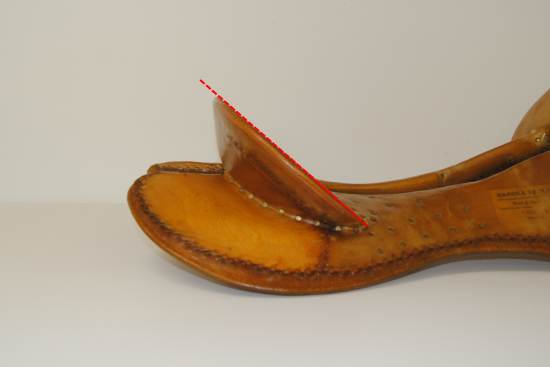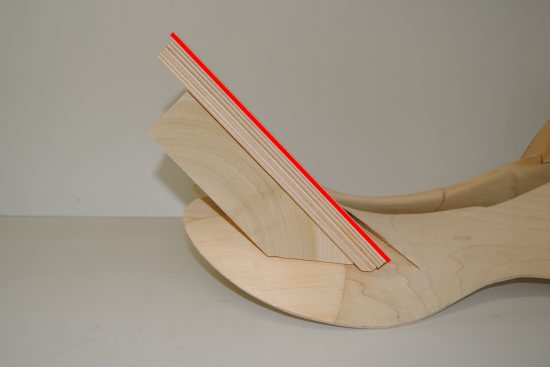Speaking of cantle angles...
We are no longer building saddle trees, but we have two videos about how Western saddles fit horses available on our westernsaddlefit.com website.

When it comes to saddle trees, there is no question that the cantle is the most complicated part to make. Some days I swear that cantles have six dimensions to them, not just three. (Please see our Cantles Conundrums page for further explanations of some of the ideas discussed below.) We recently received a scan from an old Visalia catalogue. It had some of their options when ordering a saddle tree and it is interesting to see how they handled some of the same issues that all current tree makers deal with.

What we call cantle angle is defined by all that is left of front of the original laminated section of wood which makes up the rim of the cantle. We label this angle by the angle of the jig we use to cut out bottom that fits on the bar. You can't measure that angle anywhere on the cantle once is it built even before you attach it to the tree, and definitely not after the tree is finished. So that number is really a label or a name, not a measurement.
Visalia cantle labels
Visalia used drawings and words to define the same thing. The first was HIGH - STEEP. Then they had MEDIUM HEIGHT AND SLOPE. The last drawing was labelled LOW AND FULL SLOPE. And in small printing behind that was EXTRA LOW.
Visalia cantle heights
They also had cantle heights along with the descriptions. The high-steep cantle could be 5 1/2 to 6 inches tall. The medium height and slope was 4 1/2 to 5 inches. The low and full slope was 3 1/2 to 4 inches tall and the extra low as 2 1/2 to 3 inches, with an extra note - "if desired". (Obviously they didn't get a lot of orders for cantles that low and we don't either, though we are getting more call for 3" cantles, which is why we recently added an even more laid back cantle angle.)
Height and angle correlations
These options point out that the taller the cantle, the steeper it needs to be. Now that seems counter-intuitive. If the cantle is taller, doesn't that mean it is more likely to catch you in the back and therefore you should lay it back more? While it may seem like that is the case, it doesn't actually work that way. The taller the cantle, the farther back from the front points of the cantle that top edge is. And the rider sits in front of those points. So a 3" tall cantle will have its top edge much closer to the rider's back than a 5" tall cantle if they could be set at the same angle - which they can't. Geometry doesn't let that happen.
Height and slope of the face
The other reason taller cantles work with steeper slopes is that as the cantle gets taller, the face of the slope of the cantle (as discussed on our Cantles Conundrums page) gets more laid back with the same amount of dish (and the same cantle angle). So again, as the height increases, the rider's back is held farther ahead of the top rim of the cantle. Yeah, it gets complicated...
Hamley's descriptions?
The same saddle maker who sent us these scans thinks he has seen an another old catalogue, probably from Hamleys, that has their cantles labelled with #1, #2, #3 and #4 slopes. If anyone has a copy of theirs, we'd love to see it. (Hint, hint...) And I'd just bet that the angles, etc. of the Visalia trees were not the same as the Hamley trees. After all, "every tree maker used to do things differently" years ago as well!
